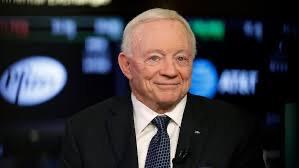Introduction
The Dallas Cowboys, one of the most iconic and storied franchises in the National Football League (NFL), have a rich history that spans over six decades. Known for their distinctive star logo, the Cowboys have become synonymous with American football excellence, marketing prowess, and cultural impact. This article delves into the history, achievements, and enduring legacy of the Dallas Cowboys.
#### Origins and Early Years
The Dallas Cowboys were established in 1960 as an expansion team, a part of the NFL’s efforts to increase its market reach and competitiveness. The team was founded by Clint Murchison Jr. and Bedford Wynne, who envisioned a football team that would captivate the Dallas-Fort Worth area. The Cowboys’ early years were marked by struggle, as they finished with losing records in most of their initial seasons. However, the team’s fortunes began to change in the mid-1960s with the appointment of Tom Landry as head coach.
#### The Tom Landry Era
Tom Landry, a former player and defensive coordinator, became the Cowboys’ head coach in 1960 and would lead the team for 29 seasons, making him one of the longest-serving coaches in NFL history. Landry implemented innovative strategies, including the “4-3 defense” and the “Flex Defense,” which revolutionized football coaching. Under his guidance, the Cowboys transitioned from a struggling franchise into a formidable team.
The 1970s were a golden era for the Cowboys, marked by consistent playoff appearances and Super Bowl success. The team won its first two Super Bowls under Landry in Super Bowl VI (1972) and Super Bowl XII (1978). The Cowboys’ success during this period was driven by a combination of talented players, including Roger Staubach, a Hall of Fame quarterback, and a series of strong draft picks.
#### The 1990s Dynasty
The 1990s represented another peak in the Cowboys’ history, often referred to as the team’s “Dynasty Era.” The Cowboys, led by owner Jerry Jones, head coach Jimmy Johnson, and a roster of exceptional talent, dominated the NFL. The team won three Super Bowls in four years, specifically Super Bowl XXVII (1993), Super Bowl XXVIII (1994), and Super Bowl XXX (1995). Key figures during this era included quarterback Troy Aikman, running back Emmitt Smith, and wide receiver Michael Irvin, all of whom are enshrined in the Pro Football Hall of Fame.
Jerry Jones, who purchased the team in 1989, played a crucial role in reshaping the Cowboys’ brand and business model. His willingness to invest heavily in talent and facilities, coupled with his aggressive media strategies, turned the Cowboys into a global brand. The team’s success on the field, combined with its high profile in the media, earned them the nickname “America’s Team,” a moniker coined by NFL Films.
#### Challenges and Changes
Following the success of the 1990s, the Cowboys faced a period of transition and challenge. The departure of Jimmy Johnson in 1994, coupled with a series of coaching changes and personnel shifts, led to fluctuating performance on the field. Despite the challenges, the Cowboys remained a prominent team, frequently making playoff appearances but struggling to secure another Super Bowl title.
The team underwent various changes in the 2000s and 2010s, including coaching staff changes and roster overhauls. Bill Parcells, Wade Phillips, and Jason Garrett all served as head coaches during this period. The team had moments of promise, such as playoff appearances and division titles, but struggled to achieve the same level of dominance seen in the 1970s and 1990s.
#### Recent Developments
In recent years, the Cowboys have continued to be a major force in the NFL, both on and off the field. The team has embraced modern analytics and technology to enhance performance and fan engagement. The appointment of Mike McCarthy as head coach in 2020 marked a new chapter, with the team focusing on rebuilding and developing young talent.
The Cowboys’ state-of-the-art home stadium, AT&T Stadium, also known as “Jerry World,” has become a symbol of the team’s commitment to excellence and fan experience. Opened in 2009, the stadium is renowned for its impressive size, retractable roof, and massive video screen, making it one of the premier venues in professional sports.
#### Legacy and Impact
The Dallas Cowboys’ impact extends beyond their on-field achievements. The team has a significant cultural footprint, influencing everything from sports fashion to entertainment. The Cowboys’ cheerleaders, a pioneering group in professional sports cheerleading, have become an iconic part of the team’s brand. The team’s star logo and colors are recognized worldwide, and their influence on NFL marketing and media strategies has set benchmarks for other franchises.
The Cowboys also have a strong fan base, known for their loyalty and enthusiasm. The team’s ability to attract a global following and maintain high television ratings, despite fluctuations in performance, speaks to the enduring appeal of the franchise.
#### Conclusion
The Dallas Cowboys remain one of the most influential and storied franchises in NFL history. From their early struggles to their periods of dominance, the team has experienced both triumph and challenge. With a rich history of innovation, a strong cultural presence, and a dedicated fan base, the Cowboys continue to be a prominent and beloved team in American sports. Their journey through the decades reflects both the evolution of the NFL and the enduring spirit of competition and excellence that defines professional football.




